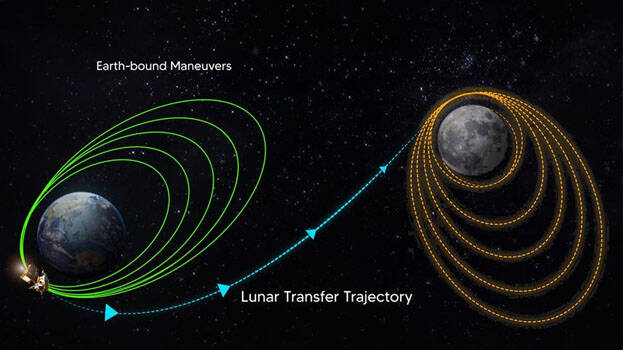

THIRUVANANTHAPURAM: Saying goodbye to Earth, India's Chandrayaan 3 has began its journey to the moon. Now it has to reach the moon's orbit and slowly land on the moon. Chandrayaan has passed the second challenge of breaking the Earth's gravitational pull yesterday. ISRO tweeted the success as 'Next stop Moon'. The first step was to get the probe into Earth orbit.
The probe, which completed its last orbit around the Earth, was redirected to the Moon at 12:32 am yesterday. For this, the fuel in the propulsion module was burned for 28 minutes. In that jump, the spacecraft that broke through the Earth's gravitational field was redirected to the Moon by the process of translunar injection. If it went wrong, the spacecraft would have wandered off into space and been lost forever.
The Earth has six times the gravitational force of the Moon. The process was carried out by ISRO Telemetry, Tracking and Command Network (ISTRAC) station in Bengaluru by placing Chandrayaan in the region where the gravitational pull of the Earth and the Moon is reduced.
The journey to the moon will take four days. On August 5, the spacecraft is expected to enter a precise orbit with the Moon's gravitational pull. This is a process called lunar orbit insertion. Then it will start orbiting the moon. It will de-orbit five times and come within 100 km of the moon. Then is the critical step of landing on the moon. Only 22 days left for that to happen.
Lander to separate on the 17th
It is estimated that the lander will separate from the propulsion module on the 7th. When the lander reaches 800 meters above the moon, it will fire its two thruster engines and come to rest for a while. After deceleration, it will descend at a rate of 1–2 meters per second and make a soft landing. The laser doppler velocity meter, which was not present in the previous mission, will accurately determine the speed of the lander this time. The rover will exit the lander after opening the ramp and travel in a radius of one kilometer. A sample of lunar soil (regolith) will be taken, analyzed for elements, and the data will be sent back to Earth via the Propulsion Module. If all goes well, the lander will land on the moon on August 23 at 5:47 pm.